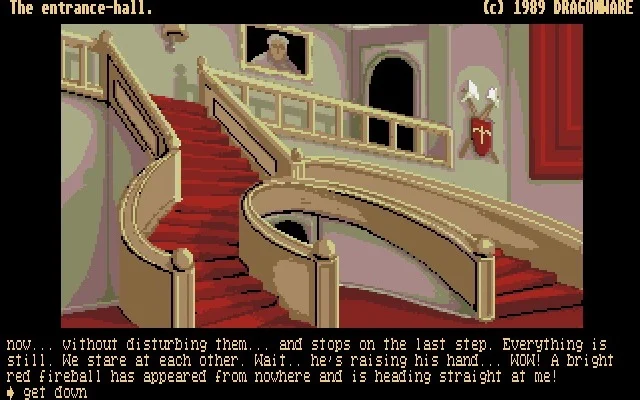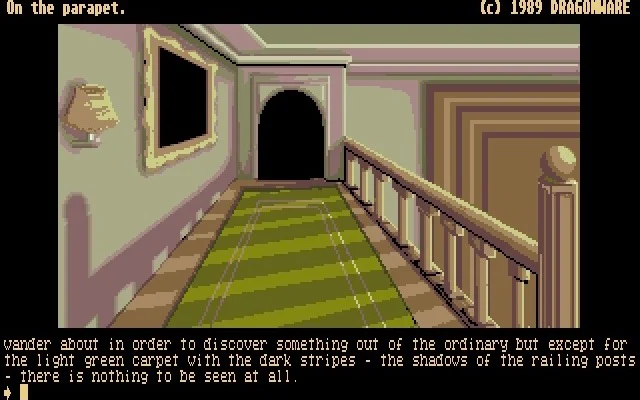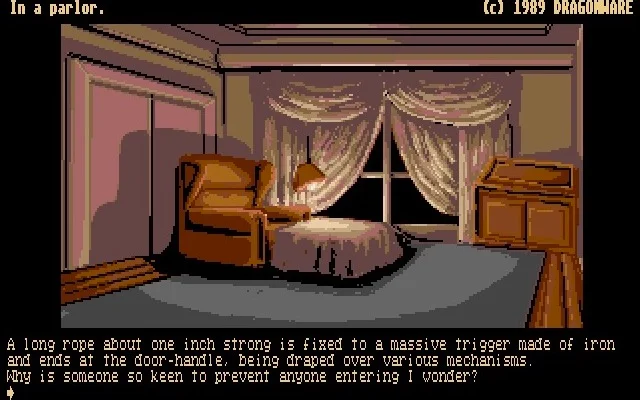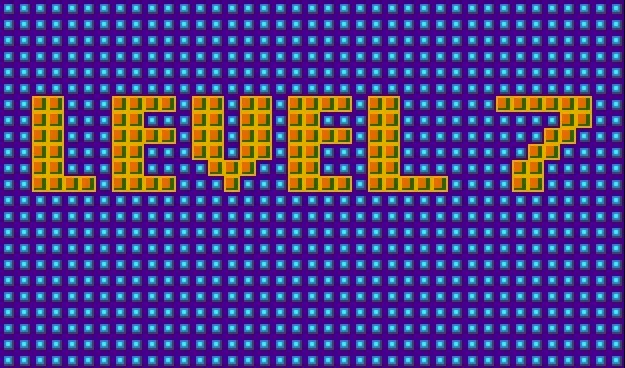Get ready to be scared stiff!!
I'm often a little sceptical of so-called horror games because they're never really gonna be that scary. In fact, the only game that has ever made me jump was the Jaguar's Alien vs Predator - it was late at night and I jumped out of my skin when an alien shrieked. Terrifying at 3am!! Anyhow, enough of my scooby-doo adventures.
I actually bought this game years ago, so figured it was about time I dusted it off and booted it up. This is an adventure developed by H. J. Braendle and Guido Henkel of Dragonware Games back in 1988. My box is quite battered with floppy disks that no longer work! But at least I have the manual, which is, for a number of reasons, most helpful.
Helpful because I'm not a massive fan of text adventures if I'm brutally honest. Though I have enjoyed a few over the years on both my ZX Spectrum and Atari ST. And, more recently, I bought a couple of crackers -
Hibernated 1 and
The Curse of Rabenstein, so I felt confident with Ooze to see what kind of horrific journey might be on offer.
Okay, let's begin with a screenshot from the beginning of our adventure, at Carfax Abbey...
 We begin standing outside and looking at our inheritance. Oh, how I wish this were real life!!
We begin standing outside and looking at our inheritance. Oh, how I wish this were real life!!
I love cheeseburgers!
We play a character called Ham Burger and have inherited Carfax Abbey from our late uncle, Cheez Burger (these names are killing me). Yep, this sounds like a horrifying comedy? Anyhow, it appears he died under mysterious circumstances. So, rather than enjoying our wealthy new lifestyle, we instead investigate what's happened. Typical...!
From the start, the game dictates the expected creepy atmosphere. Upon arriving, we cautiously check out our new home. Thunder is rumbling, and an old signpost details the address, 666 Rue Morgue. Nervously walking up, we see the porch and an old rocking chair, but this ain't an ordinary chair because it's haunted. That's right! In fact, almost every room is haunted by something, so it's a good idea to take it slow and ponder the environment carefully. Very carefully.
Ooze has a good sense of humour. Wait too long, and a panicky message appears asking if you're still there. Don't leave me here alone, it whimpers lol. Just try sitting on the porch chair for an eye-opening experience that I did not expect. The characters are excellent, and I laughed when rescuing Marie: "Marie EnToilet"!! However, Murx is an oddity which made me chuckle and scratch my head. Oh, and when you die, the game pranks you - by banning you from the RAM!!
Oh yes, there are lots of silly pranks and fun places to explore, so let's see some more screenshots...
 I cannot spoil what happened, but you can still get a glimpse of the humour!
I cannot spoil what happened, but you can still get a glimpse of the humour!

You might not see it, but the text can be very vivid to portray the scene nicely.

More humour after a wrong decision. But look at those weird trophies. Nice graphics!
I'm rich and also haunted!
The world of Carfax Abbey is small but feels bigger because of the time spent at each location. It's tempting to rush off and explore, but that means you will miss everything important (as expected) and probably die. So be warned! Getting around is done using the expected compass directions (N/S/E/W) plus U/D for up/down. It's possible to 'sit down' or 'run south' to hastily exit. A handy command called 'exits' will inform you of all possible routes from your location.
Each area has a vivid description that is extremely long-winded, so it's possible to overlook something blatant, like the lance, which was totally infuriating. I know, I know, all adventures require that you read the room's description, but it's apparent that Ooze takes this to the extreme thanks to the amount of detail mixed with subtle hints. Thankfully, that feature can be changed by using the 'brief' command, which I did from the moment I entered the Abbey!
The parser is good, but I fear something was lost in translation (German roots). Simple commands are often confused by a pedantic requirement for correct input. Try unlocking a door, searching a trunk or switching on the lights. Well, light... Irritating!! Level 9 quality, this is not. Whatever you read in the description, examine that said object fully because nothing is obvious. Find the chalk if you can (agony that). Or suss out what you're supposed to do with the Parlour rope.
Surely you're interested in seeing more? I thought so, so let's view some more screenshots...
 We're starting to get somewhere now, but then this happened... but then a "plopp". Hmm...
We're starting to get somewhere now, but then this happened... but then a "plopp". Hmm...

Some areas really do offer nothing valuable other than a lovely walk to the next room.

Oh my, things are hotting up in the bedroom!
An adventure with an atmosphere?
Visually, I loved how Ooze combined the two resolutions for great effect. Low is obviously used to display a range of gorgeous images, whilst the clarity of Medium is put to great use to read the text. This is superb and works well. Weirdly, not every room you visit appears to have its own separate image, which I found a little confusing at first.
Those with a crisp monochrome monitor will be happy to know Ooze works in high resolution. The text looks wonderful but the images... hmm... not so much. It's as if the low-res images have simply been converted on the fly, rather than drawn specifically for this particular display mode. Which is a shame.
The audio is superb with lots of samples for eerie creaks, footsteps, ghoulish screams and so on. However, the atmosphere is spoiled by the ST's keyboard clicks, which I didn't see any way to disable. It's no big deal, but I'd have preferred to disable them because they are a lot louder than the sampled sound effects. (and no, XControl did not work)
Looks great, sounds great. That can only mean one thing: more screenshots...
 Sometimes the player can be too daft for his own good...
Sometimes the player can be too daft for his own good...

Think before you act, but whilst you're here, check out this artwork!

Sometimes the descriptions don't match the visuals, which is a tad annoying.
The CryptO'pinion?
Ooze is a great adventure and will undoubtedly appeal to those looking for something of a horror nature rather than a predictable fantasy theme. Sadly, I found the room descriptions overly long-winded and, at times, poorly translated into English. Also, basic exploration can sometimes be finicky - right from the moment you enter the Abbey (walking upstairs is quite the event). If ever there was an adventure that demanded you make a map, this is definitely it.

























